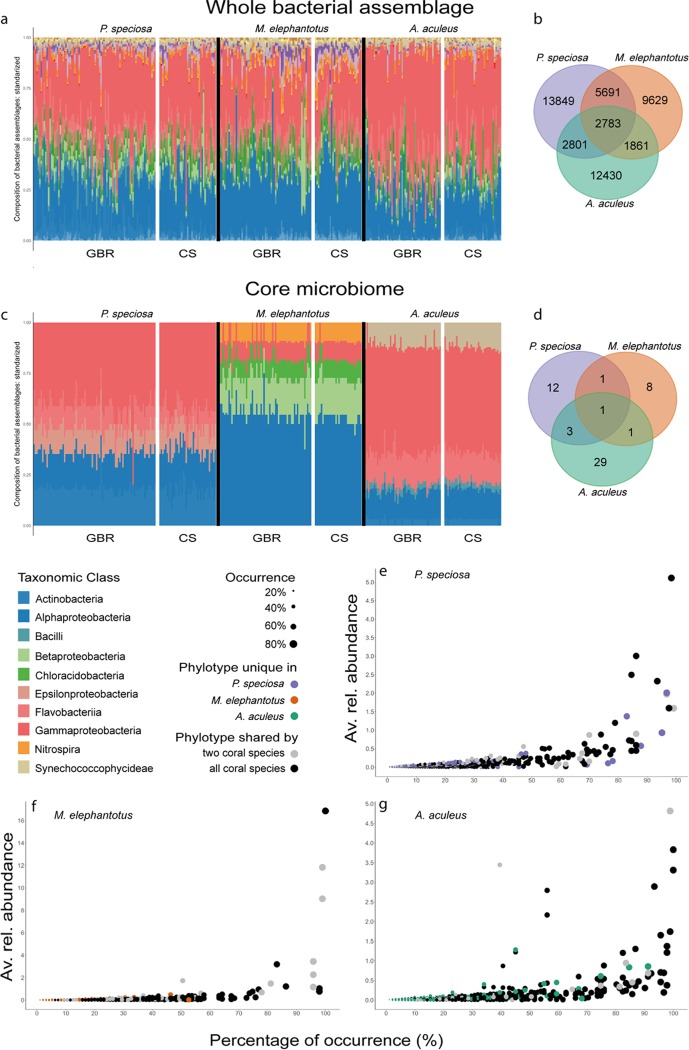FIG 3.
The coral microbiome comprises common and species-specific phylotypes in a stable taxonomic structure across individuals. The taxonomic structure of coral-associated bacteria within individual coral hosts (a) was reflected by that of the core microbiome (c). Alpha- and Gammaproteobacteria dominated the bacterial assemblage composition despite the variability across spatial scales (Fig. 2). Bacterial classes were structurally stable across individuals. Common bacterial phylotypes of the three commonly occurring coral species (species-specific microbiome and resident microbiome [b]) and core microbiome of individual P. speciosa, M. elephantotus, and A. aculeus corals (d). Graphs of the average relative abundance versus percentage of occurrence across coral individuals for P. speciosa (e), M. elephantotus (f), and A. aculeus (g) revealed that highly persistent (≥80%) OTUs are rarely species specific (note the difference in scale in relative abundance). Bacterial assemblage composition was defined by the number of OTUs belonging to the taxonomic level class, standardized by the total per individual. For the extended taxonomic legend, see Fig. S16 at https://figshare.com/s/ffadfdf1a1bab8a37088.

